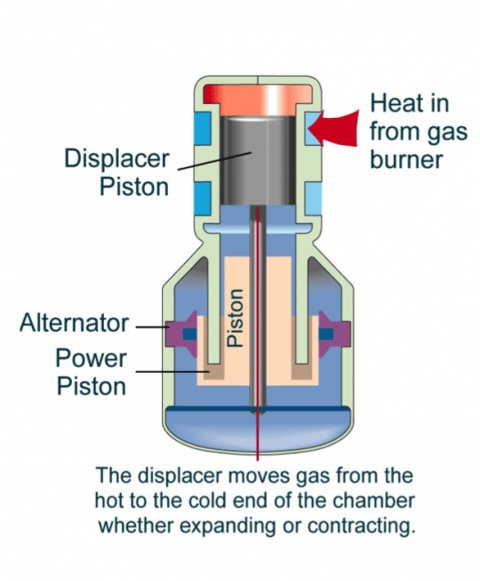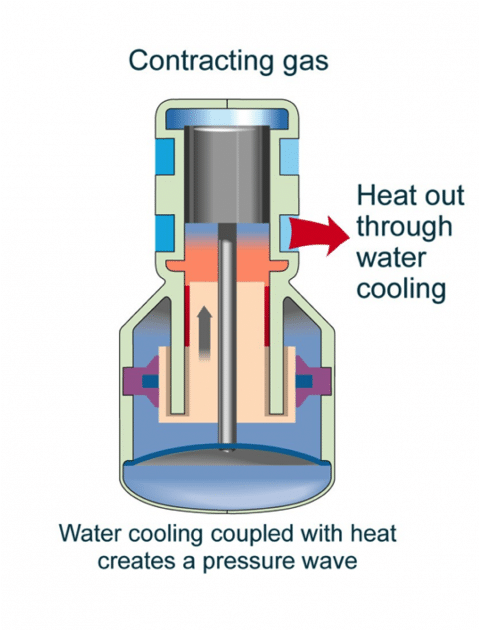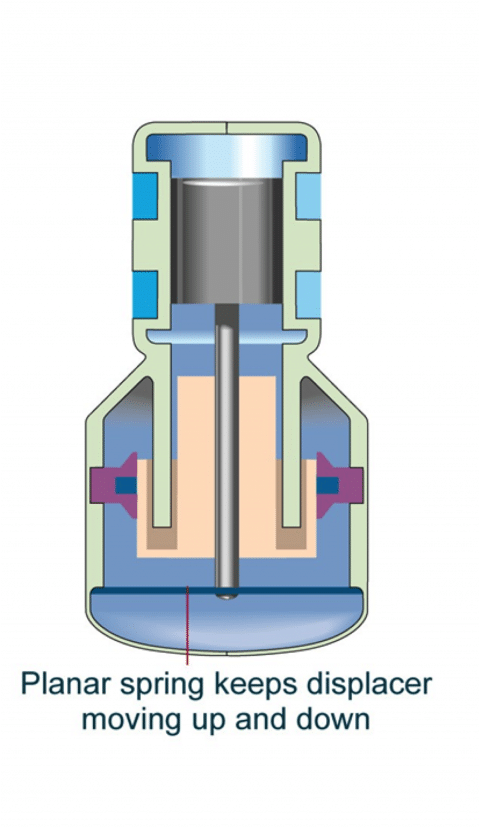Technology
Microgen has been a major player in Free Piston Stirling technology for more than 20 years.
How does it work?




In very simple terms: a gas in a closed body is heated up on one side. The gas, which expands due to the heat, is cooled down on the other side and contracts. The expansion and contraction causes a continuous movement. The process follows the so-called PV diagram.

PV Diagram
What is a Free Piston Stirling Engine?

The original Stirling engines were crankshaft driven. This principle appeared to have its limitations
over time, due to seal tightness, lubrication of moving parts etc. Maintenance at regular intervals –
preventive and corrective – was required. These issues do not hamper the so-called free piston
engine, invented by William Beale in 1964. Applying gas bearings, natural frequencies, tightly
produced parts and hermetically sealed with a linear alternator it can run in theory for an
indefinitely long time.
Benefits of the Free Piston Stirling Engine
- Extremely durable in rugged and harsh conditions;
- Minimal maintenance with remote monitoring;
- Multiple voltages, modular modulating base power and flexible peak power options;
- Various fuel sources: natural gas (prepared and casing gas), LPG, Diesel;
- Clean combustion with low emissions;
- Simple installation and small footprint;
- Options for heat use.
Microgen has been a major player in Free Piston Stirling technology for more than 20 years.
Contact us
+31 (0)85 489 1390
